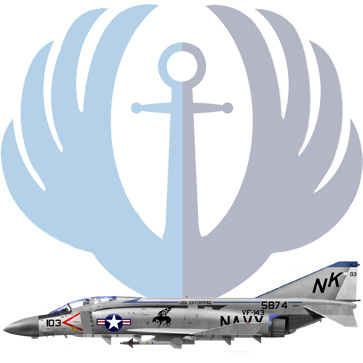LATEST SALTY BIRDS
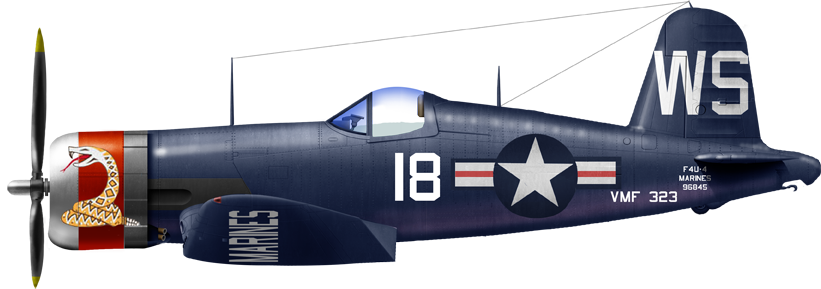
✈ 30/12/2025
 Vought F4U-4/5 and other Corsairs (1944-52)
Vought F4U-4/5 and other Corsairs (1944-52)
Final entry in this trilogy about the F4U Corsair, one of the most important naval aircraft in history, by its characteristics and longevity, and paradoxically banned for carrier decks for years. This part completes the picture, with the full story of all operators, late WW2 operations, late variants F4U-4 and F4U-5 and the sub-variants, late Goodyear models like the F2G "super corsair", postwar F4U-7, USMC AU-1, night and photo-recce variants, high altitude variants, the Korean War, foreign operators like the Aeronavale (Indochina, Suez, Algeria, Tunisia), Argentina, and the infamous 1969 "Futbol War" between Honduras and El Salvador with Corsairs on both sides...
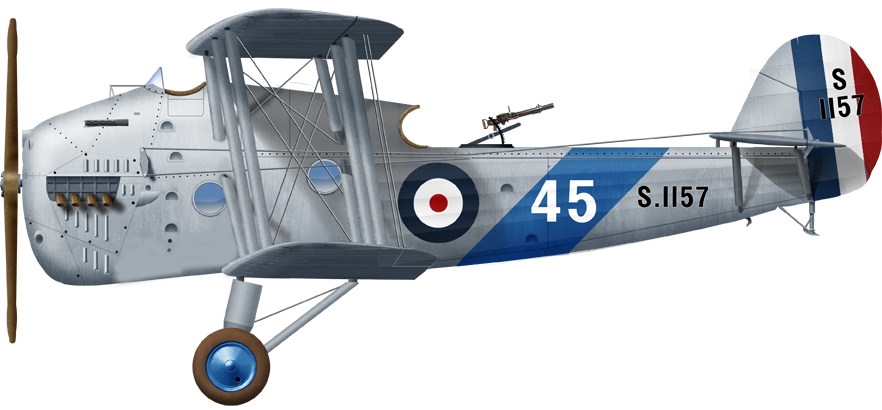
✈ 20/12/2025
 Blackburn Blackburn
Blackburn Blackburn
Another forgotten naval warbird, and arguably renown for its... interesting looks, was the most Blackburn of all, inventively named after the company. Answering the Specification 3/21 of 1921, this was to be solely a carrier-based reconnaissance and spotting aircraft. The company designed a fuselage optimized for that mission while wing and tail came from the Blackburn Dart. Three prototypes flown in 1922, leading to 12 R1 to be produced (Blackburn I) delivered in April 1923. The 18 more were built in 1923–1924 entering the No. 422 Fleet Spotter Flight on HMS Eagle in the Med. A further 29 Blackburns with the Napier Lion V Blackburn R2 were ordered and active until 1931, replaced by the Fairey IIIF.

✈ 10/12/2025
 Albatros W.8 (1918)
Albatros W.8 (1918)
The Albatros W.8 was a German biplane fighter floatplane of the late First World War, on patrol in the latter half of 1918. It was classic in its approach with a wooden fuselage wrapped in canvas similar to most designs of that period, as well as the wings and tails, but a pair of wooden flattened floats. The W.8 was unique for its aft T style tail unit, and in that it was powered by water-cooled Benz Bz.IIIb eight-cylinder engine. More classically it was fitted with a fixed two-bladed wooden propeller. The W.8 was a two-seater fighter/reconnaissance model and merely a late war prototype, albeit three were still manufactured. A rarity worth investigating...
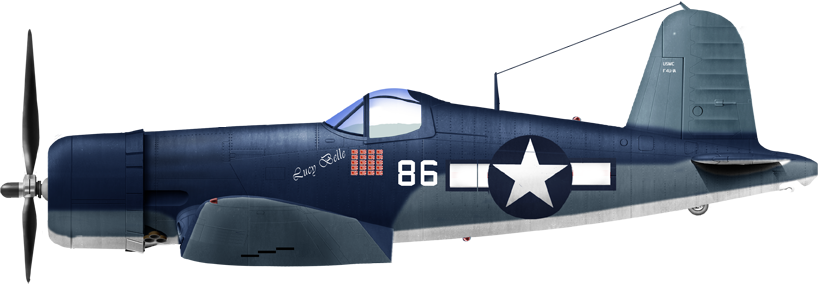
✈ 30/11/2025
 Vought F4U-1A/C/D Corsair (1943)
Vought F4U-1A/C/D Corsair (1943)
Second entry on the most famous naval fighter of WW2 and beyond, the F4U-1A, C and D, successors of the Birdcage (F4U-1) developed in 1942. They introduced the trademark bubble canopy improving visibility among others, and way more were produced (a combined 3,941 between 1943 and 1944) than the F4U-1A (758) and really cemented the final look of the Crorsair, which most fampus version evolved into the F4U-4. Brewster, lambasted for its disastrous handling of the Buffalo and especially Buccaneer was forced to accept its share in production of the Corsair with the F3A-1 and F3A-1D, and Goodyear as well with the FG-1 and FG-1D. It was also massively used by the FAA (510 Mark II from Vought, 430 Mark III from Brewster). It marked the transition from land-based only to carier-barsed operations for the USN as pioneered by the FAA, and really bore the brunt of 1944-45 operations in the Pacific.
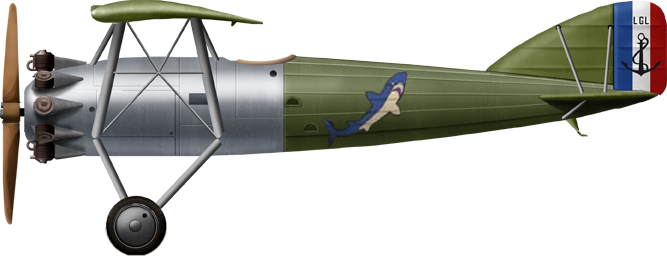
✈ 20/11/2025
 Loire Gourdou-Lesseure LGL-32 C1
Loire Gourdou-Lesseure LGL-32 C1
From 1925, Gourdou-Leseurre was absorbed by Loire shipyard and the fighter LGL.32 was the only one pushed for serial contruction, primarily for the Armée de l'Air, exported and declined into a multitude of variants. Powered by Gnrome-Rhone 9Ady engine with two synchronized 7.7 mm nose MGs and flying first in 1925, the naval aviation received 15 C.1 versions intended for for the Aircraft Carrier Béarn, just completed. By 1935, new models tested dive bombing for the Navy with a "V" landing gearand fourch, with six made. They were maintained on the Béarn until replaced by the Dewoitine D373, another parasol fighter.
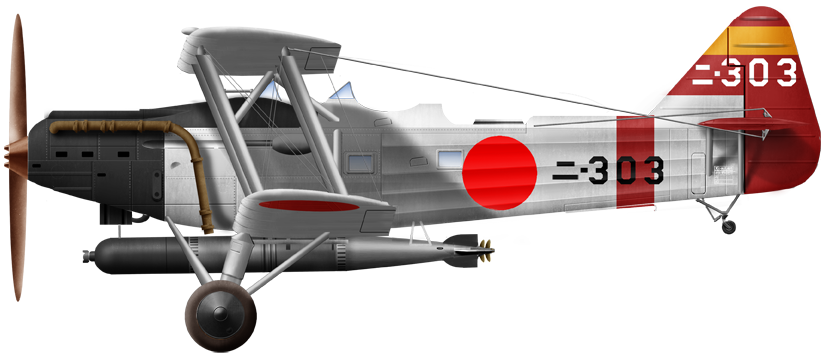
✈ 10/11/2025
 Mitsubishi B2M (1934)
Mitsubishi B2M (1934)
The Mitsubishi B2M was a Japanese carrier-based torpedo bomber developed from 1930. It was built by Mitsubishi to a design by Blackburn Aircraft of Britain and was operated by the Imperial Japanese Navy from 1934. After the failure of the B4M in 1934, Mitsubishi would ony produce the 2-engine land based G3M torpedo-bomber and concentrated on fighters. Th B2M1 was a carrier based model that pioneered new ship attack techniques from Hosho, Kaga and Akagi, and the B2M2 was used for bombing at high and low-level against China during the early phases of the Second Sino-Japanese War (1937). The B2M was replaced by the Nakajima B5N "Nate" monoplane.
Meet the Elite
The very best aircraft, tailored for the most challenging conditions, with the creme de la creme pilots, capable of managing the toughest landings.

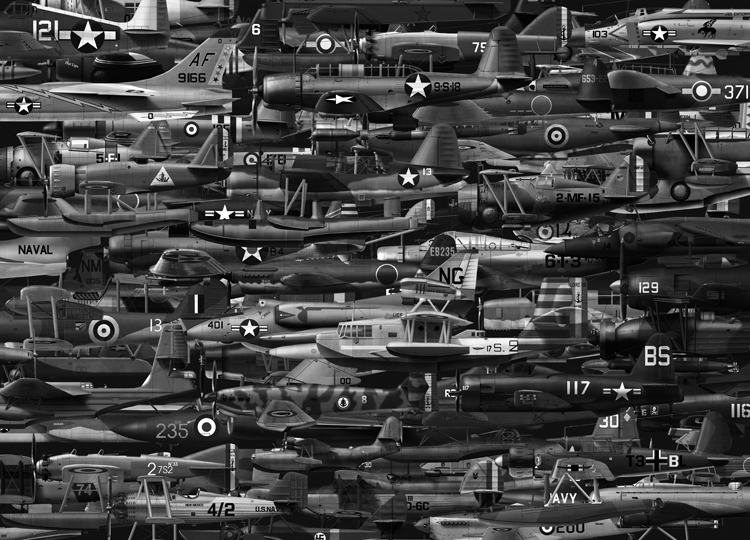
An adventure
Follow this story over a century, from early trials in 1912 to this day. Not only carrier planes, but also floatplanes and flying boats, land based patrol models and naval helicopters
A complement for
Naval Encyclopedia
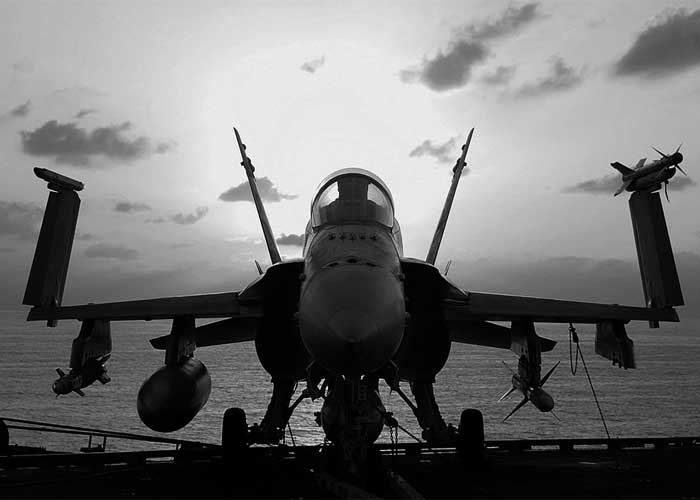
Carrier Based aircraft - A select club.
Carrier aviation started in UK in 1917 with the HMS Campania and later Furious (plus many more over the years). These ones were tailored for rough landings and catapulting and so constituted oftern a separate branch of aviation, with in general far better pilots than in air force.

Seaplanes - Know your salty bird.
Wether they were called seaplane, floatplane and flying boats, all had in common the possibility of landing and taking off at sea. This most naval breed or aircraft emerged early on with the immense advantage of landing anywhere, unlike traditional ground planes.

Land-Based Aircraft - The big stick
By definition land-based aviation always had been reserved for the Air Force. In the 1930s the Navy wanted bombers but this was denied. Only the Imperial Japan eventually had its way. But WW2 changed everything and land-based, long range aviation started to be used by Navies for patrol, in alternative to floatplanes. A trend that went on in the cold war and to this day.

Naval Helicopters
Naval helicopters play a crucial role in maritime operations, serving various purposes including anti-submarine warfare, anti-surface warfare, search and rescue (SAR), reconnaissance, logistics support, and personnel transport. These helicopters are specifically designed and equipped to operate from naval vessels such as aircraft carriers, destroyers, frigates, and amphibious assault ships.
100 Years of Aircraft Carriers
WW1 Naval Aviation
 The topic of naval aviation really emerged as soon as the navy got interested in the concept back in 1911-1912: just like the army, the main center of interest was the need of reconnaissance from high enough to make a difference in operations
The navy had the same reasons to operate these albeit altitude was low and autonomy meagre.
The topic of naval aviation really emerged as soon as the navy got interested in the concept back in 1911-1912: just like the army, the main center of interest was the need of reconnaissance from high enough to make a difference in operations
The navy had the same reasons to operate these albeit altitude was low and autonomy meagre.
 Eugen ely tests of landing and taking off showed a land based model could operate from a ship and first operational tests with floatplanes led to the design and evaluation of the first seaplane carriers. This became a new category of ships built by all belligerents, providing from 1914 onwards an ideal observation point for artillery spotting.
Eugen ely tests of landing and taking off showed a land based model could operate from a ship and first operational tests with floatplanes led to the design and evaluation of the first seaplane carriers. This became a new category of ships built by all belligerents, providing from 1914 onwards an ideal observation point for artillery spotting.
Already in 1914 during the siege of tsingtao IJN aviation had the best overview of the battlefield thanks to its farman 60. Later the first aerial duel of the war took place when the sole taube of the garrison tried to shot it down.
As the war progressed more planes were deployed above gallipoli than at any other time during the war in a coastal operations. By 1917 the ramping up of the submarine actions in the Atlantic prompted an unprecedented effort to built seaplanes or more precisely floating boats to spot and destroy u boats clearly visible from above.
This was very much a new field of development that arrived to maturity in 1918 and paved the way for similar tactics in the second world war. The effort started on both sides of the Atlantic when the US joined operations in april 1917. Hovewer the real deal was for all the use of land based models due to their higher performances. On this field the royal navy started experiments of long platforms on several ships: The hms campania was a converted liner which at first experimented with seaplanes launched by trolleys and after modifications of land based models.
 Which also motivated the creation by fairey of a dedicated model named after the mother ship hms campania. Soon as the project of using three new battlecruisers tailored for the Baltic by admiral fisher petered out a first one, hms furious, was converted as a hybrid carrier with a fly off deck forward and a landing deck aft. Soon it was envisioned to convert the two others, glorious and courageous into supplementary carriers whereas furious was completely rebuilt in 1918 with a larger though deck interrupted by the bridge and funnel. In this form, hms furious was able to launch a first attack on the german dirigible base of trondern.
Which also motivated the creation by fairey of a dedicated model named after the mother ship hms campania. Soon as the project of using three new battlecruisers tailored for the Baltic by admiral fisher petered out a first one, hms furious, was converted as a hybrid carrier with a fly off deck forward and a landing deck aft. Soon it was envisioned to convert the two others, glorious and courageous into supplementary carriers whereas furious was completely rebuilt in 1918 with a larger though deck interrupted by the bridge and funnel. In this form, hms furious was able to launch a first attack on the german dirigible base of trondern.
This was the world's first airborne carrier-based raid in history, and albeit not overly successful it was nevertheless a grounbreaking achievement that showed a brand new path of development both in aviation and naval warfare still developing in the interwar.
Interwar Naval Aviation
Great britain anyway showed the way in this field gradually joined by japan and the usa. The early interwar saw a spectacular demonstration of capability by the us air force when Billy mitchell managed to bombard and sink the former war reparation sms ostfriesland, a pre-dreadnought battleship, not without controversy.The washington treaty as signed also precised the status of aircrcraft carriers with a singular tonnage limit (10,000 tonnes) but no precised global tonnage other than the one attributed to the fleet overall. This tonnage limit and the treaty terms soon gave some leeway to japan to start cheating, first by building a serie of seaplane tenders thought of for a possible future conversion on one hand and an aircraft carrier at just 10,000 tonnes standard to be considered not as such, belonging to an unplanned category of auxiliary.
All three major fleets defined by washington tonnage had different strategies concerning their carrier construction plan. Great britain clearly had the leeway in numbers with the furious (campania was lost in 1918) glorious and courageous undergoing their first reconstruction, hms argus, a former liner, hms vindictive a former cruiser, and hms hermes, the first dedicated carrier.
Japan and the usa were both caught without such programme albeit the imperial japanese navy laid down their own first dedicated carrier, ijn ryujo, soon after hms hermes and completed her sooner. With treaty cancellation many large ships already launched were promised to the scrapyard and thus were instead converted as aircraft carriers. For the USN this was the lexington pair (lexington and saratoga) former battlecruisers, which proved to have a surprisingly good top speed (destroyers could not follow). The third one was an assuming former collier turned experimental training carrier, uss langley.
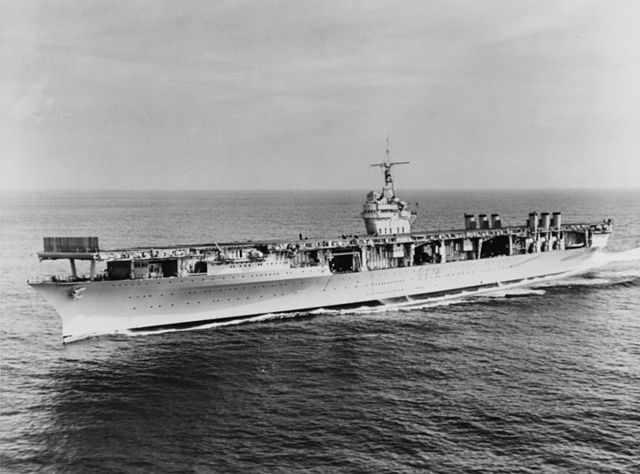 Completed way before the lexingtons she trained generations of aviators for the latter. The usn will have to wait until 1931 to test a brand new generation and dedicated carrier with fine calcuations on the now precised carrier tonnage after the treaty of london the previous year. A bit like ijn ryujo at the same time, uss ranger tested the lowest tonnage limits (albeit c17,000 tonnes) with the largest air park possible. However in the long run it was considered a failure as too slow due to compromises but served as a blueprint for the much better yorktown class (limited to two ships with a third smaller uss wasp made to "purge" the remaining authorized tonnage. Once the war started in september 1939 a third yorktown was built, uss hornet.
Completed way before the lexingtons she trained generations of aviators for the latter. The usn will have to wait until 1931 to test a brand new generation and dedicated carrier with fine calcuations on the now precised carrier tonnage after the treaty of london the previous year. A bit like ijn ryujo at the same time, uss ranger tested the lowest tonnage limits (albeit c17,000 tonnes) with the largest air park possible. However in the long run it was considered a failure as too slow due to compromises but served as a blueprint for the much better yorktown class (limited to two ships with a third smaller uss wasp made to "purge" the remaining authorized tonnage. Once the war started in september 1939 a third yorktown was built, uss hornet.
On its side, japan also converted two former battlecruisers of the alagi class but one was destroyed during the great kanto earthquake and its kaga, another cancelled battleship, that was chosen for conversion. These were not the last converted carriers but it will happen much later.
At this point lessons has been learned and wargames played ay academies while training showed new capabilities and in turn created new official requirements, driving in turn the aviatipn industry to create more powerful and efficient model. The imperial japanese navy then engaged in a new program of construction:
Ijn hiryu ans soryu tested the island placement and using cruisers machinery to reach blazing speeds but its with next shokaku class that carrier construction reached its pinnacle prewar.
 Back to the royal navy and the only converted former capital ship was the ex almirante cochrane destined to to chile, requisitioned for conversion but completed after hms hermes. By 1932 thus, the royal navy was rebulding again all three furious, glorious and courageous. But all theses designs were limited in size and lacked the proper air group.
This led to choices of more versatile models above all else. The most interesting by far was hms ark royal, which tested the two hangar somutipn to stack more planes and indeed had in 1939 the largest air park. However theoricians soon prophetized that it was more important to protect its air park than having a very large one.
Thus emerged the idea of an aircraft carrier. Britain again, led the pack by creating a new type of carrier: the illustrious class.
Back to the royal navy and the only converted former capital ship was the ex almirante cochrane destined to to chile, requisitioned for conversion but completed after hms hermes. By 1932 thus, the royal navy was rebulding again all three furious, glorious and courageous. But all theses designs were limited in size and lacked the proper air group.
This led to choices of more versatile models above all else. The most interesting by far was hms ark royal, which tested the two hangar somutipn to stack more planes and indeed had in 1939 the largest air park. However theoricians soon prophetized that it was more important to protect its air park than having a very large one.
Thus emerged the idea of an aircraft carrier. Britain again, led the pack by creating a new type of carrier: the illustrious class.
And then came ww2, which surprised many. As indeed other nations had a go at the concept or planned to have one. France on one hand also converted a former cancelled battleship of the normandie class, bearn. But she was too slow for practical operations and was soon joined by commandant teste, a seaplane tender with interesting ideas whereas two fast dedicated carriers were started in 1938, the joffre class. None was completed in time. Germany on its side rearmed from 1933 and with the blessing of the 1935 anglo-naval treaty enabling 35% of british tonnage, admiral raeder started the ambitious Z plan which included aircraft carriers, and in 1936, started the first of these, kms graf zeppelin.
She would never be completed. As for italy and the regia marina, "il duce" disapproved plans of making aircraft carriers pretexting that its aviation all around italy and in the colonies could reach anywhere around "mare nostrum". In reality coordination between the regia aeronautica proved all too illusory and never matched expectation. Only after the disasters at taranto and matapan the regia marina started to consider the concept and requisitioned two liners for conversion. None was completed (aquila class).
Carriers of WW2
 Carrier operations in ww2 saw the first losses but not much lessons. Its really in the mediterranean that it took a whole new aspect with the attempts to resupply the beleaguered island of malta. There, the armoured carriers proved their point, resisting the fiercest assaults by the axis.
Taranto by november 1940 was a groundbeaking raid, proving that two squadrons of biplanes could severely impair, for months, the bulk of the italian fleet, forced to evacuate to safer ports further away from malta.
Carrier operations in ww2 saw the first losses but not much lessons. Its really in the mediterranean that it took a whole new aspect with the attempts to resupply the beleaguered island of malta. There, the armoured carriers proved their point, resisting the fiercest assaults by the axis.
Taranto by november 1940 was a groundbeaking raid, proving that two squadrons of biplanes could severely impair, for months, the bulk of the italian fleet, forced to evacuate to safer ports further away from malta.
The last coup performed by naval aviation was in may 1941: the brand new german battleship bismarck started operations and became the number one priority for the royal navy with two aircraft carriers on the chase. Eventually its one swprdfish from ark royal that managed to inflict a severe and fatal blow with a lucky shot in the rudder of the giant forced to turn in circles and later caught and finished off by the big guns of rodney and king georges V. Another, less shiny aspect of operations was the ongoing battle of the atlantic. Like in the previous war, air patrol soon became more prevalent and the allies started to look at the new concept of escort aircraft carriers
 But the major event for naval aviation in ww2 was without doubt the attack on pearl harbour:
On 7 december 1941 came the boldest air raid in hidtory so far coming from aircraft carriers, six of the kido butai with c350 planes of three types.
They managed to repeat the feat of taranto, but this time on the entire pacific war. Fortunately for fleet commander husband kimmel admiral kurita denied a third wave, and did not destroyed the fuel depots. This day crucially three aircraft carriers were absent.
This was extremely lucky as they would play a vital part of subsequent operations in the pacific.
But the major event for naval aviation in ww2 was without doubt the attack on pearl harbour:
On 7 december 1941 came the boldest air raid in hidtory so far coming from aircraft carriers, six of the kido butai with c350 planes of three types.
They managed to repeat the feat of taranto, but this time on the entire pacific war. Fortunately for fleet commander husband kimmel admiral kurita denied a third wave, and did not destroyed the fuel depots. This day crucially three aircraft carriers were absent.
This was extremely lucky as they would play a vital part of subsequent operations in the pacific.
These carriers, lexington and saratoga, wasp, yorktown, enterprise and hornet were all that stood between the japanese juggernaut and the us west coast. They will have a though fight up to mid-1943 with the solomons back as a first step before the island hopping campaign. Meanwhile US naval construction had not been idle. In 1939 even before the war started there has been a plan for a new class of fleet carriers devoid of teeaty limits. This was approved in 1940 and the first laid down sortly after pearl habour. This was the largest fleet carrier program in history with more than twenty hulls ordered, the essex class.
However later in 1942 there were concerns they will be ready in time and by presidential order ten hulls of light cruisers were requisitioned for conversion into light fleet carriers (independence class). Meanwhile as the atlantic campaign grew in intensity a massive plan to built escort carriers based on cargo hulls started as well. The bogue class was one of the most important and most went to the royal navy. On this side too conversions and constructions went on with a dozen single ships or classes.
On the us side the casablanca class came from henry j kaiser, that promised to the president 100 escort carriers based on its cargo construction techniques. 50 were authorized, much of which saw action in the pacific and later circa 30 commencement bay class based of oiler hulls on the same principle following the conversion on four cimarron class vessels or the Sangamon class.
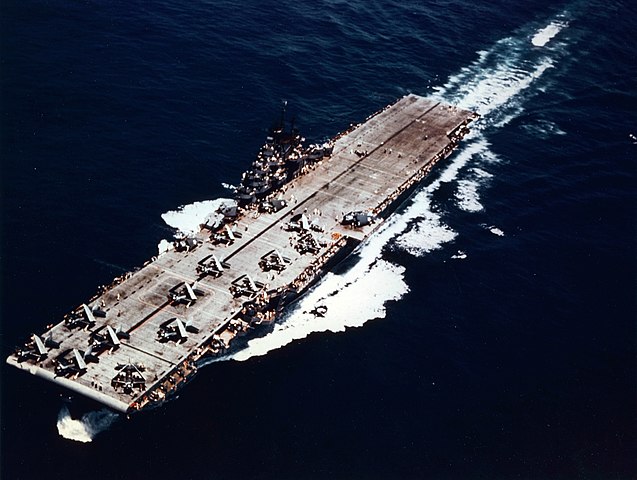 The Essex class were eventually completed in 1943, and would play a decisive role in the island hopping campaign. With the "sunday punch" or each carrier launching 100 planes in short succession.
The Essex class were eventually completed in 1943, and would play a decisive role in the island hopping campaign. With the "sunday punch" or each carrier launching 100 planes in short succession.
The japanese navy, hit hard already at midway was finished off at leyte after the "great turkey shoot" of the mariannas. The japanese industry meanwhile never had been able to cope. There was an ambitious replacement program stated after midway and another running in early 1942 consisting in the conversion of four seaplane tenders into aircraft carriers, zuiho, shoho, chitose and chiyoda, plus the conversion of two liners as the junyo class and later a serie of escort carriers. One of the most interesting was an hybrid assault, ship, the Akitsu maru, which operated autogyro and thus became an ancestor of modern LHDs.
But by far the most ambitious program were a two echelon carrier force composed of armoured carriers, the prototype of which was the ijn taiho, and a second line of simpler unarmoured mass built fleet carriers of the katsuragi class. The first, taiho was joined later by shinano, built over a battleship hull, third of the yamato class. The first was sunk by a submarine after her second mission and the second during her first training sortie.
None of the numerous Katsuragi class carriers was ever operational. They were sunk in anchorage close to kure or in the area in august 1945. Meanwhile britain had a new construction program ongoing. Two more armoured carriers were started and completed in 1944, the indefatigable class and more ambitious vessel more on the us scale but never completed. The malta class was probably the most spectacular, being nearly 300m long for 45000 tons.
 However with naval yards busy the naval staff still wanted fleet carriers tp play their part in the pacific. The idea was to give to civilian or mixed experience shipyards a simpler light fleet aircraft carrier design to built. These could later be fitted out in a proper way. This program comprised more than twenty hulls. However only four of the first serie -the colossus class- were completed in time to take part in the british pacific fleet operations in 1945 but in second line.
However with naval yards busy the naval staff still wanted fleet carriers tp play their part in the pacific. The idea was to give to civilian or mixed experience shipyards a simpler light fleet aircraft carrier design to built. These could later be fitted out in a proper way. This program comprised more than twenty hulls. However only four of the first serie -the colossus class- were completed in time to take part in the british pacific fleet operations in 1945 but in second line.
Another interesting carrier of the start of the war was hms unicorn, a double hangar prototype of workshop carrier solely planned to repair and return damage frpntline naval planes in the pacific. Another was hms pretoria castle, anpther converted liner, which became a training carrier for future pilots and test carrier based prototype. It became famous notably fpr testing new versions of the sea spitfire later known as the seafire ans many others in the hands notably of star test pilot eric "winkle" brown. Another interesting design was also the MAC or "merchant aircraft carrier".
A dozen grain and small oil carriers received a permanent deck built above their holds so that they stilll carried the goods with the convoy but had a small command island and a park of three planes, generally fairey swordfish, versatile and more capable to land on these small platforms. They were able to spare more valuable escort carriers, which now started to operate independently as part of "hunter killer groups".
By 1943 the us navy, which did not liked the small fleet carriers of the independence class, wanted to test the concept at the time of the launch of the first essex class, and proposed the conversipn of larger baltimore class heavy cruisers hulls. This became after some delays the saipan class, completed after the war. Last ambitious program of the us navy were the midway class started in 1943 as the first american armoured carriers. But these were still required to carry 100 aircraft unlike the british ones (36-38, later ported to 46 or even 50 thanks to outriggers and a permanent deck park. The midways were massive ships maling no compromises. They displaced thrice as much as the yoktown of 1936 for 300m long. In a sense announced the usn cold war supercarriers. Three were started in 1943 but only uss midway was completed just in time to witness the japanese signing of the armistice.
Naval Aviation in the cold war
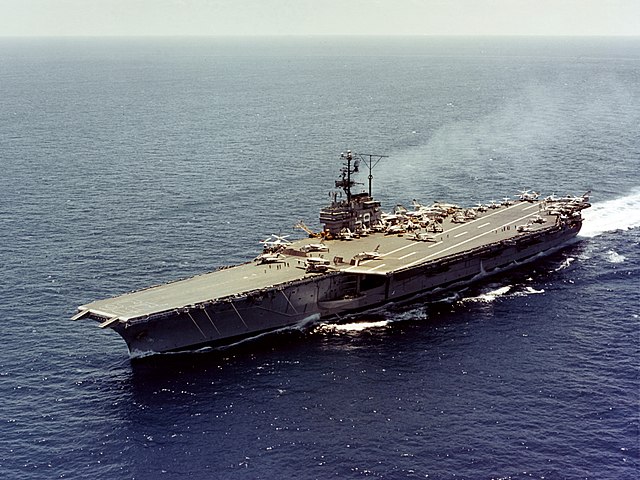 Next opens up the 47 years of the cold war with new players and a readjustment of the role of a carrier in light of ww2 experience. Within the frame of the "pax americana" the new fleets were reorganized around battlegroups. One per fleet in peacetime, two to three in times of crisis (korea and vietnam). Their centerpiece were the "supercarriers" a media term which designated the successors of the midway class: the 1950s forrestals and late 1950-60s kitty hawk class. Alongside the former essex class, of which many were completed postwar, to a new design.
Next opens up the 47 years of the cold war with new players and a readjustment of the role of a carrier in light of ww2 experience. Within the frame of the "pax americana" the new fleets were reorganized around battlegroups. One per fleet in peacetime, two to three in times of crisis (korea and vietnam). Their centerpiece were the "supercarriers" a media term which designated the successors of the midway class: the 1950s forrestals and late 1950-60s kitty hawk class. Alongside the former essex class, of which many were completed postwar, to a new design.
The smaller escort carriers were mothballed but some stayed active as helicopter carriers for amphibious support and asw duties. Their main adversary, the soviet union, at that stage had no aircraft carrier. The navy was its weak point, dtopped abruptly in 1941 and recycled in what became essentially a land war.
However in 1945 stalin dreamed of a fleet of cruisers to wage a trade war on nato, assisted by hundreds of submarines derived from the ww2 german type XXI. Stalin until his death in 1954 wanted battlecruisers, not aircraft carriers, to the dismay of admiral kuznetsov, the fleet's CiC. Under the new premier, nikita khrustschev, however, the situation changed dramatically. khrustschev was now receptive to the idea of a very moden bavy capitalizing on new technoligies to compensate for its numerical inferiority. The conventional fleet wanted by stalin was scrapped and the new naval plan prioritized missile ships to destroy supercarriers in saturation attacks, and as soon as possible nuclear propulsion and weaponry.
On this side, the usn started its own ambitious program of nuclear propulsion. The result was triple and ambitious: The uss nautilus, first SSN, the uss long beach, first nuclear powered frigate, and of course, the uss enterprise, first nuclear powered supercarrier. However both of the later became one-off experiments. They were not utterly successful and way too costly for more to be produced. Eventually uss nautilus became the forerunner of a successive classes of submarines. However the next carriers were the 1970s nimitz class a serie of ten ships built up to the early 2000s.
On the other way, the uss long beach was sole of her type. Next "double ender" cruisers were the leahy class, small, cheap, and with nine built, the tenth, uss bainbridge being converted as a nuclear propelled version of the latter.
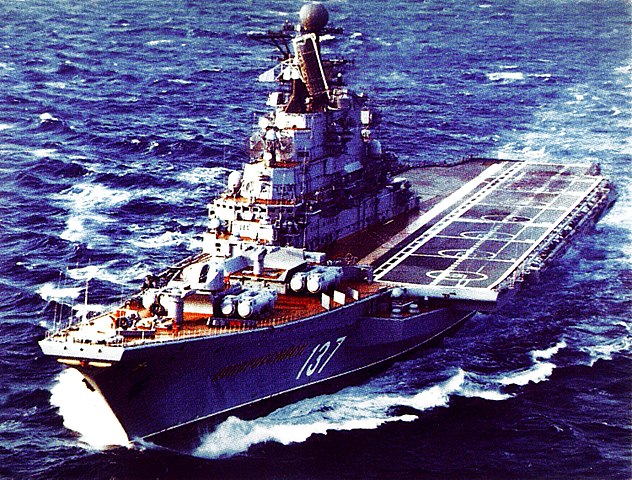 Meanwhile the soviet program went on with a serie of ships tailored to defeat us carriers, starting with the kynda class. On the submarine side, albeit ballistic submarines had the priority, the first carriers killer subs were the juliett class (NATO designation) a transitional class with four cruise missiles. Next was the november class.
This was a "classic" SSN, first soviet nuclear attack type.
Meanwhile the soviet program went on with a serie of ships tailored to defeat us carriers, starting with the kynda class. On the submarine side, albeit ballistic submarines had the priority, the first carriers killer subs were the juliett class (NATO designation) a transitional class with four cruise missiles. Next was the november class.
This was a "classic" SSN, first soviet nuclear attack type.
Later the SSGN category would acquire a number of ECHO 1and 2 types and ultimately the charlie and oscar class in the 1970-80s. They were part of the soviet strategy to deal with usn battle carrier groups with cruisers and long range strategic bombers turned antiship models as the Tu-142 "Bear-N". Indeed in the 1980s a new generation of carrier killer ships were planned to replace the kynda, the slava class. The Soviet Union also innovated in the naval aviation carriers field by creating the moskva class helicopter carriers for asw and assault missions.
Better still in the mid-1970s the four kiev class hybrid carriers were built. They used an oblique flight deck hybrid configuration and combined helicopters and VTOL planes. The latter were the rather mediocre yak-38 "forger" types barely able to lift any payload. Eventually some in the top brass in the mid-1980s envisioned a full deck aircraft carrier, along an ambitious plan for three of these 75000 tonnes vessels. This was the only way to operate really capable carrier-borne aircraft. The final carrier and only one built was not a catobar but stobar ship, with a small taking off platform forward and c35 aircraft.
However the admiral kuznetsov was completed just befpre the collapse of the soviet union, and commission and pilot qualification was delayed by years. As of today this unique true carrier east of europe had shown poor service readiness to say the least.
 Talking of europe, the usa were not the only one to operate carriers in the cold war. The case of britain is probably the most striking one. The royal navy provided the greatest effort to acquire aircraft carriers in ww2. The war ended as this process was ongoing. This left most of the 1942 light carrier started still in various stage of completion or not even launched.
Talking of europe, the usa were not the only one to operate carriers in the cold war. The case of britain is probably the most striking one. The royal navy provided the greatest effort to acquire aircraft carriers in ww2. The war ended as this process was ongoing. This left most of the 1942 light carrier started still in various stage of completion or not even launched.
Having no need for these wartime carriers the british government started to pull out the plug on new spendings. Choices willl have to be made. The surviving interwar carriers were quickly discarded. The escort carriers were returned (to the US), scrapped or sold to the civilian market for possible cargo reconversion. The three illustrious and two indefatigable class were kept and partially modernized.
However soon the question of the first jets posed a problem. The choice was buiding new ships altogether or converting existing ones, at great cost. In these cash-stripped years the latter was chosen.
But also another solution. To finance the whole operation of completing four new light carriers for RN service, modernize two of the former colossus class and the sole illustrious class and completing other large carriers started in 1944-45, the government decided to sell existing carriets and new ones completed abroad. Between the performances given by these in ww2 and cheap price of acquisition, there was no shortage of candidates. Both australia and canada acquired their first ones under this occasion, which saw service in korea.
They were suceeded by new modernized carriers. But their small size limited the range of aircraft they could operate. Canada scrapped its own, hcms bonaventure, after operating a flight of sea kings. The new direction of the government sent it to the scrapyard and so did australia with hms melbourne which took part in the vietnam war. Still in the americas two other countries acquired their own carriers at this occasion: Argentina which acquired ara 9 de julio and later 21 de mayo (of falklands war fame). Brazil acquied minas gerais. All were part pf the three batches of 1942 light fleet carriers and they had in common to operate f4 skyhawks and or s2 trackers aside helicopters.
 Back in europe these small carriers were also purchased by France (arromanches), and the netherlands (as de ruyter). Both were disposed of in the late 1960s or beyond. Back to the royal navy and in the 1960s were operated a serie of converted or new built vessels:
Back in europe these small carriers were also purchased by France (arromanches), and the netherlands (as de ruyter). Both were disposed of in the late 1960s or beyond. Back to the royal navy and in the 1960s were operated a serie of converted or new built vessels:Hms illustrious was completely rebuilt and modernized as well as the four centaur class carriers. The one exported were of the previous colossus and powerful classes. Now, came brand new vessels, orphans of their own programs at the end of ww2: HMS Eagle, HMS Ark Royal (former extra Implacable class) One of the centaurs was rebuilt several times, HMS Hermes.
She was actually the last one completed to the new designs in 1959. She was rebuilt again in the early 1970s and early 1980s as well then took part with its sea harriers to the falkland war. All these carriers ended srapped in the 1980s and replaced by three small VTOL carriers, the Invincible class (1977), much smaller than the late 1960s planned 53,000 tonnes CVA01 class. And let's not forget HMS Argus in 1988, Ro-Ro and auxiliary carrier. Ultimately Britain would renew with large carriers with the 2000s Queen Elisabeth class, both large conventional STOBAR.
Meanwile back in france, the old Béarn was used as depot ship and later scrapped, dixmude (the former escort carrier hms biter), was acquired, as well as the ex US bois belleau, the former light fleet carrier uss Belleau woods. This was added to the arromanches as the first line carriers operating in indochina and the later in algeria. Only two "export" of the independence class came to be the spanish dedalo acquired in 1967. France was the only country in europe with the will and finances to create a brand new class of fleet carriers during the cold war, the clemenceau class. They were about the size of ww2 essex class carriers and served well beyond the end of the cold war. Foch was purchased by brazil as minas gerais but service was terminated in 2021. France would ultimately create its first nuclear powered aicraft carrier in 1985-90 as FS Charles de Gaulle.
Meanwhile other European powered did not stayed idle, with Italy creating in the 1960s two hybrid cruisers/helicopter carriers as the Doria class, and afterwards in the 1970s, the muhch larger helicopter cruiser Vittorio Veneto. Starting in 1982, the Giuseppe Garibaldi was its first through VTOL carrier, operating AV8B Harriers. Today, two more replaced her and Veneto: Conte di Cavour (2004) and Trieste (2014). Spain built its own Principe de Asturias in 1985 based on coldwar US cancelled SCS/VSS "escort carrier" designs. In Northeren Europe, neither the Bundesmarine or Dutch Navy envisioned a new carrier. However in 1947 Svenska Marinen did so, with a small design which was matured based on the British Colossus class but eventually never ordered.
 In Asia, four nations embarked in the bandwagon of hybrid or full carries: The JMSDF for example accepted into service two classes of helicopter destroyers, the Haruna (1971) and Shirane (1978). In the 2000s however, Japan seeing the Chinese PLAN rise, ordered two new classes of "helicopter destroyers", aircraft carriers in all but name as they were through-deck designs: The 13,950 tons Hyūga class (2008) and 19,500 tons 2015 Izumo class. China acquired the unfinished Riga (1988), Varyag (1990) as 001 Liaoning after being sold in 1998 and comissioned in 2002, as well as the ex-Soviet Kiev and Minsk in 1994 and 2016, officially as museum ship/theme park.
In Asia, four nations embarked in the bandwagon of hybrid or full carries: The JMSDF for example accepted into service two classes of helicopter destroyers, the Haruna (1971) and Shirane (1978). In the 2000s however, Japan seeing the Chinese PLAN rise, ordered two new classes of "helicopter destroyers", aircraft carriers in all but name as they were through-deck designs: The 13,950 tons Hyūga class (2008) and 19,500 tons 2015 Izumo class. China acquired the unfinished Riga (1988), Varyag (1990) as 001 Liaoning after being sold in 1998 and comissioned in 2002, as well as the ex-Soviet Kiev and Minsk in 1994 and 2016, officially as museum ship/theme park.
It does not make any doubt they could be converted back in full military conditions in case of war. Later she was helped by the Type 002 Shandong (2017), first Chinese-built carrier, and with Type 003 Fujian and Type 004 in construction. India was the other nation adopting carriers: INS Vikrant in 1961 (ex-Powerful class), and INS Viraat in 1986 (ex-Hermes), as well as INS Vikramaditya (completely rebuilt Kiev-class Novorossyrsk). As of todayn the INS Vikrant (2013) is her new flagship. And there is Thailand, with HTMS Chakri Naruebet in 2001, a SCS concept built in Spain operating 6 Sikorsky SH-60 Seahawk 2(+4) MH-60S Knighthawk and 6 AV-8S.

WW1 Naval Aviation

WW2 Naval Aviation
